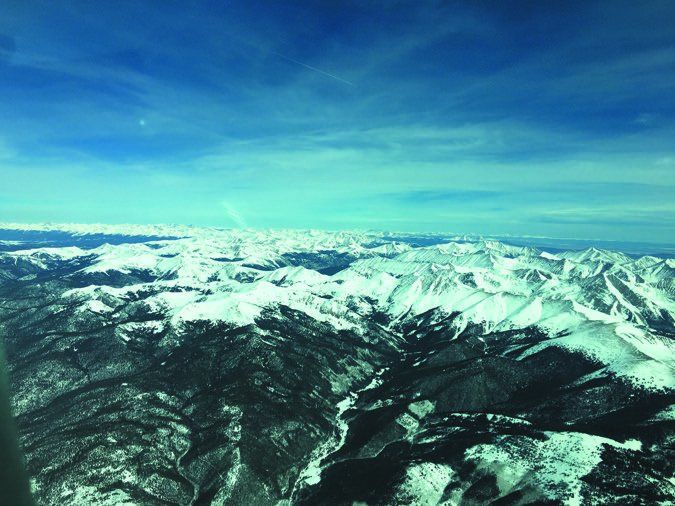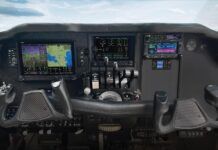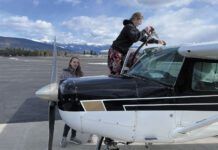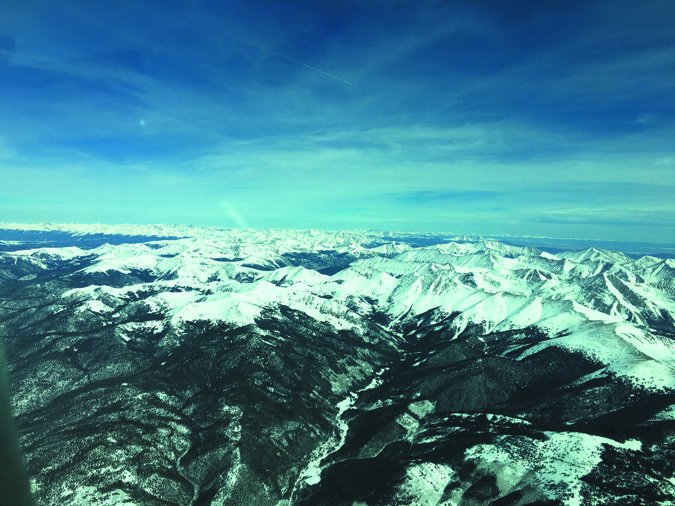
The laws of physics and aerodynamics don’t magically change when a general aviation airplane flies from the flatlands into the mountains, yet every year there are accidents in the high country where pilots tried to get more performance from an airplane than was installed. Pilots discover they can’t get airborne on the available runway or hit obstructions after takeoff; they discover downdrafts exceed the ability of their airplanes to climb and hit mountain ridges; they hit the sides of canyon walls because they can’t make a 180 in the available space; and sometimes their airplanes come to pieces around them because they decided to fly fast where there was severe turbulence.
So what’s the big deal? Why do rated pilots continue to run into serious problems when flying in the high country? That was the question we posed to a number of mountain flying instructors. In this article we’ll pass along what we learned from them, information on available training and what we think should be included in a mountain flying course. We’ll say early and often that based on the research for this article, review of numerous accident reports and some years of flying in the mountains, we strongly recommend that anyone who is planning to fly over the mountainous areas of this country take ground and flight instruction in mountain operations before doing so.
We also note that backcountry operations—actually flying into the short, narrow, obstructed airstrips in the mountains—are a specialized subset of mountain flying and require additional instruction, in flight, not merely a ground course.
It’s Just Plain Different
We wholeheartedly agree with AOPA’s comment in one of its mountain flying publications in which it recommended getting a checkout from an experienced mountain pilot: “To do otherwise invites the label ‘stupid pilot tricks,’ and Western landscapes are already littered with aluminum carcasses put there by pilots who discover(ed) in the last minute of their lives that reading about some aspect of mountain flying—say, density altitude—is not at all the same as experiencing it.”
In its Safety Alert, Mastering Mountain Flying, the NTSB wrote, “Pilots with limited or no training in mountain flying can be surprised about their aircraft’s different performance at high density altitude, often leading to serious or fatal accidents.” It went on to say, “Wind and other weather phenomena interacting with mountainous terrain often lead unsuspecting pilots into situations that are beyond their capabilities.”
Mountain flying instructor Jer/ Eberhard (www.jerslash.net) referred to a hypothetical Kansas pilot with a turbocharged Bonanza who was used to flying in the often howling winds of that state. He pointed out that those winds are horizontal and usually steady and said that it all changes when the pilot gets to the Mountain West and that wind becomes vertical due to the effects of flowing over the mountains. “Even if the pilot decides to fly at FL180 he can get into standing wave and experience a rate of descent of 4000 FPM at max power and best rate of climb airspeed.”
Downdrafts
Eberhard said that dealing with a strong downdraft is not intuitive and requires that the pilot stick the nose down, accept an even greater rate of descent and fly fast to get through the downdraft. That applies at all altitudes in the mountains and requires training to do it safely.
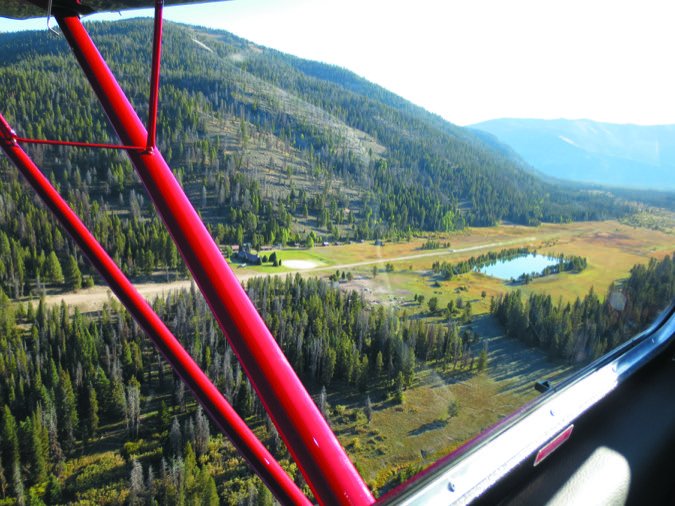
Instructors told us that the combination of wind and reduced performance at high density altitudes are something a pilot has to experience and internalize so that she or he viscerally understands that the airplane may only climb at 200 or 300 FPM. And, what that looks like when close to the ground—it’s hugely disconcerting that the nose has to be a lot lower in a full-power climb than the pilot is used to—and to think about it in how many feet the airplane is going to go up in one mile.
Having a pilot calculate the distance that it will take for the airplane to break ground and how high it will be a mile beyond that point and realize that it may be less than 200 feet is an eye opener. Then having the pilot fly the profile and experience the reality is something multiple instructors said was one way for the effects of high density altitude—and airplane loading—to really sink in.
Training Available
There are instructors and flight schools throughout the Mountain West offering training in mountain flying and a few that give more advanced backcountry training.
A sampling of flight schools offering training revealed that most had dedicated training that took place over two days and included three to five hours of ground instruction and three to five hours of flight training. Almost invariably training could be done in the customer’s airplane—although the schools usually required that it have a minimum of 160 or 180 HP. Cost for the courses averaged $1000 in the customer’s airplane; if a rental were involved, it was $600 to $1000 more depending on the type of airplane.
Backcountry-specific training proved to be more localized to Montana and Idaho, largely due to the number of usable remote strips in those states. Mountain Airdance (www.mountainairdancellc.com), in Helena, Montana, has a dedicated backcountry course in a Super Decathlon at $170 per hour for the airplane and $70 for the instructor. Another is McCall Mountain Canyon Flying Seminars (www.mountaincanyonflying.com) in McCall, Idaho. It offers a series of dedicated “seminars” that range from two-day fundamentals courses to five-day excursions to backcountry ranches, campsites and resorts with prices from $2850 to over $7000. They will tailor courses to the individual pilot and offer instruction in a Super Cub, Cessna 182, T182 and Kitfox at prices starting at $240 per hour.
Course Content
We came away from our research into mountain flying with the opinion that the starting point for learning to fly in the mountains is to read the late Sparky Imeson’s Mountain Flying Bible Revised. Once that is completed, we recommend that any ground and flight training instruction for mountain flying should cover at least the following and include analysis of accidents due to each topic:
Density Altitude. In-depth discussion of the importance and effects of density altitude on aircraft performance including takeoff and landing distance calculations and rates of climb at various aircraft weights. Flights should include high density altitude takeoffs, climbs and landings at more than one airport at different temperatures. The pilot should come away with an understanding that the aircraft performs at the density altitude, not the number the pilot sees on the altimeter.
Aircraft Performance. Building on the density altitude segment, this goes into detail on post-takeoff climb performance in feet per mile and what a pilot is going to see when trying to climb in a 1500 FPM downdraft. Takeoff calculations build in the effect of runway slope and surface.
We liked the approach taken by Dave Parker, proprietor of Northern Air (www.northernair.biz) in Bonners Ferry, Idaho. He applies a prerequisite to his training: ensuring the pilot can hold speed on approach and climbout within one to two knots. That’s because it is necessary to be that precise to be able to land safely in the space available on mountain strips and to get all of the climb performance out of the airplane.
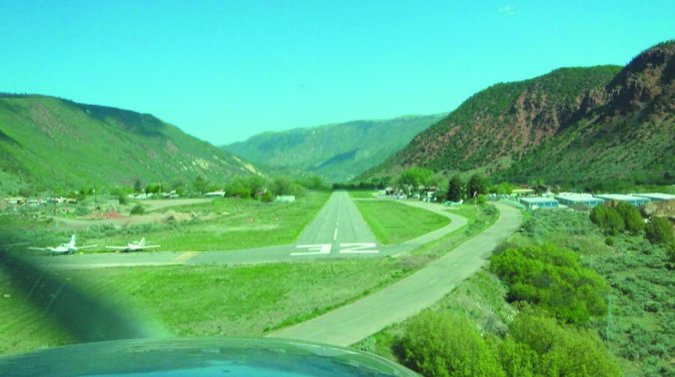
Takeoff performance calculations should include establishing an abort point on the runway. If there are no obstructions, the airplane must be at 71 percent of liftoff speed halfway down the runway.
Weather. For most flatland pilots, the idea that they can’t go flying on a gorgeous summer afternoon sounds like utter nonsense. It takes getting pounded with mechanical turbulence so intense that there is concern about controlling the airplane and/or it coming apart for it to sink in.
In the Colorado Rockies the rule of thumb is that if the winds are out of the west at more than 20 knots at 12,000 feet, you aren’t going flying because of the severity of the turbulence and the intensity of the downdrafts. Overall, when flying in the mountains, plan to be done for the day before noon. You’ve got plenty of time to fly in a day, you just need to start near dawn.
Training should include explanations and experience with where and at what altitudes turbulence is to be expected, slowing to Va for the airplane’s weight to survive it and how to safely get out of it—there may be relatively smooth altitudes below the ridges or very high. Above the peaks and downwind, standing wave can be expected.
Because most mountain flying in nonturbocharged aircraft is carried out below the ridges—it’s rarely necessary to go above 10,000 feet except to cross passes—cloud heights take on increased importance. If you need to cross a ridge that is 5000 feet above your destination airport, you’ll want to have at least 1500 feet below you crossing it (and do so at a 45-degree angle so you only have to make a 90-degree heading change to turn away should you hit sink). However, if the airport is reporting what sounds like a good VFR ceiling of 4000 feet, you aren’t going to be able to cross that ridge.
Training in local weather phenomena is important as is how to get information from remote weather broadcasting stations in passes and on mountain tops.
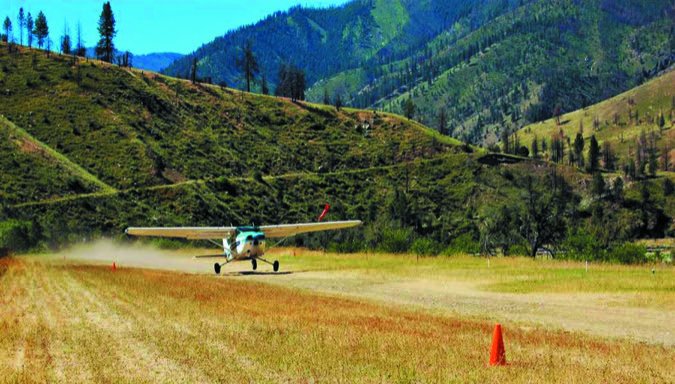
Weight. This ties in with performance; however, is important in its own right so that a pilot viscerally understands the effect of weight on takeoff distance and climb and knows that trying to operate at gross weight at high density altitude airports may be impossible
Route. Do not plan on going direct. Routes should follow terrain that maximizes forced landing spots and links to civilization. Much of the flying will be over valleys, but on the upwind side of a valley because that’s where the updrafts are.
Physiology. Training in the effects on the body of prolonged flight at altitude—notably the risk of hypoxia and diminished cognition and quality of decision making.
Fuel Mixture. Discussion and inflight use of the mixture control. It must be leaned after start, then for max power on takeoff and during climb. On landing it should be set appropriately lean for a go-around.
Night Ops. In general, because you can’t see the mountains, VFR at night should be flown using IFR techniques and procedures.
IFR. MEAs that are not far below the flight levels mean that if there is cloud, there is probably going to be ice, so IFR in IMC in piston-powered airplanes can be iffy. In addition, if your airplane cannot cope with a 4000 FPM downdraft, it’s probably not a good idea to fly IFR in the Rockies. Several of the instructors we spoke with said they would not fly IFR in IMC over the highest of the Rockies in piston airplanes.
Survival. Your survival kit consists of what you have on your person—ideally in a vest. The bag you threw in the back may burn up with the airplane or otherwise be unreachable if you are injured. Your knife should be able to be easily opened and closed with one hand.
We covered survival vests in the February 2015 issue of Aviation Consumer.
Canyon Flying. On which side of the canyon to fly depending on winds to get the best performance out of the airplane along with appropriate speeds to fly to ensure that a 180 is possible should you need to get out. An effective training tool is to look at the shadow of the airplane on the ground and see how much ground the airplane covers when making a 180.
This gets more advanced with backcountry flying as a number of the strips used are at the bottom of canyons or steep valleys and cannot be seen until on very short final. That means the pilot has to have local knowledge so as to have the airplane properly configured and on speed at that point. A go-around may not be possible.
Airspace. There’s a lot of special use airspace out west and firefighting TFRs can pop up on short notice. Training has to include how to find out about restricted airspace and stay out of it.
Mountain Operations Training: The Free Stuff
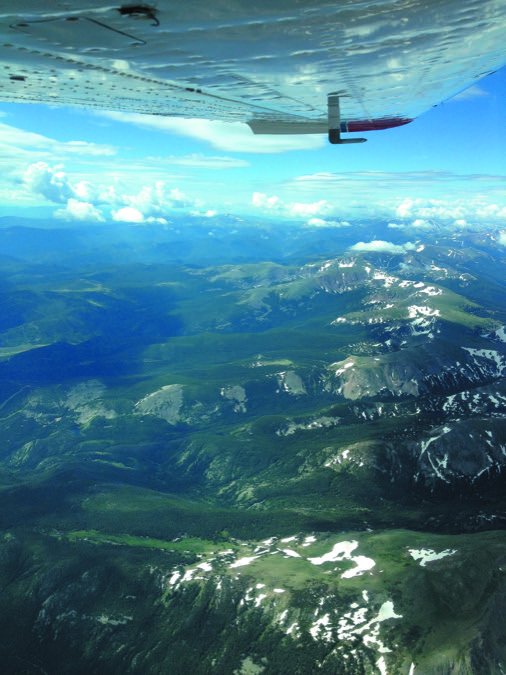
While it’s not true that every pilot in the world requires a crowbar to open her wallet, it is true that we tend to be unreasonably resistant to taking any training that isn’t required by the regs (and much that is) and having to pay for it.
That being the case, we were delighted to find out that there is a lot of excellent information on mountain flying, and some on backcountry flying, available for free on the internet. We looked at everything we could find, including taking the interactive course we located. The following is a list of the free training materials and sources we reviewed that we think are good, solid starting points for mountain and backcountry training. We’ll be blunt about the materials—while we think they are quite good and some are excellent, they are NOT a substitute for flight instruction from an experienced mountain flying instructor before you go flying among the vertical rocks.
• The FAA’s Tips on Mountain Flying: https://tinyurl.com/y9bzes9e
• In the May/June 2012 issue of FAA Safety Briefing—Rocky Mountain High: The Zen of Mountain Flying: https://tinyurl.com/y7kkz7uy
• From AOPA—Mountain Flying: https://tinyurl.com/yax86jdf
• The Backcountry Pilot website (www.backcountrypilot.org) is full of frequently updated information.
•AOPA’s Mountain Flying interactive course: https://tinyurl.com/yb9xw9vb. As with most AOPA courses, it’s well presented, the quizzes require some thought to get the right answers and upon completion you get a certificate and FAA WINGS credit.
• In the 1960s the FAA made a film on mountain flying that, while it feels dated, we think is a very good reference today. It’s available on YouTube in three parts: https://tinyurl.com/yc5vwyh5 takes you to the first and has links to the next two.
• The website of the Recreational Aviation Foundation (www.the raf.org) contains extensive information about backcountry airstrips and operations.
• The Colorado Pilots Association (www.coloradopilots.org) has a number of pages on its website with resources for those interested in mountain flying as well as a list of instructors.
• The website for the Idaho Aviation Association (www.idahoaviation.com) has information on backcountry flying—the state is famous for it—and a list of flight instructors. We like its motto: “Working to preserve Idaho’s irreplaceable airports and backcountry airstrips.”
• Finally, we like AOPA’s Safety Advisor on Mountain Flying: https://tinyurl.com/yb9x342a
The Backcountry: Which Airplane?
As pointed out in the main article, backcountry flying is a more demanding subset of mountain flying. There are a lot of airplanes that are alleged to be good for backcountry ops. Most of them have been reviewed in this magazine.
I interviewed the proprietors of Northwest Backcountry Aircraft of Boise, Idaho, Kasey Lindsay and Bob Hannah—experienced backcountry pilots—asking for their thoughts as to what makes a good backcountry airplane. I’ve combined their thoughts along with reviews in this magazine of rugged, utility airplanes to come up with a list of attributes of a good backcountry airplane. By the way, that’s an American Champion Scout on downwind for the backcountry strip at Sulfur Creek Ranch in the photo to the right.
Landing gear strength and stability. It has to absorb punishment from solid touchdowns as well as ever-present rocks, brush and holes. The brake lines should be protected as there’s a good chance a gear leg is going to strike something that could break an exposed line.
The gear geometry should make ground handling as easy as possible and minimize the risk of noseover in tailwheel airplanes. The most common cause of backcountry accidents is loss of control on landing.
Good visibility over the nose during all phases of landing and takeoff. Hitting obstructions short of, on the runway and just after liftoff are common cause of backcountry accidents. An airplane that has the nose block forward visibility is at risk of hitting something. The nosewheel King Katmai is proving popular partially because of its good visibility over the nose. The design of a tailwheel airplane should allow a competent pilot to apply the brakes while the tail is off of the ground to allow good visibility over the nose and maximize deceleration.
Suitable stability in pitch to allow precise speed control on final.
Flaps should provide high drag and rapid deceleration so the airplane doesn’t float if the pilot isn’t perfect with airspeed control.
Power. Lots of it. When things go wrong, the ability to climb steeply and rapidly may mean everything. As Kasey Lindsay put it, the airplane has to be able to “climb like a rocket and come out of the sky like a piano.”
No nasty behavior in a slip—and the ability to slip steeply, hold the slip into the flare and straighten out at the last moment.
Good prop clearance.
High wing for brush clearance.
Good visibility. When maneuvering for a runway in a canyon, a skylight means you can see what you need in a steep turn. Having lots of window area with few bars and posts that can get in the way is important—especially when looking down and aft, something you do surprisingly often.
Excellent control response in gusty crosswinds and the ability to pin the airplane after landing so a gust doesn’t put it back into the air.
Easy access to the flap control.
Easy to use, fast-acting trim system. The ability to go around at the last possible moment, without a lot of trim change when going to full power in landing configuration—you don’t want to have to be stiff-arming the stick or yoke while you’re trying to get maximum performance out of the airplane.
A good mix between STOL ability and cruise speed. Sacrificing everything for STOL means a slow airplane in cruise.
The ideal backcountry airplane will handle a 500-foot strip safely and get there and back home without having to time the trip with a calendar or worry about running out of fuel.
Conclusion
We’ve found mountain and backcountry flying to be some of the most enjoyable we’ve ever experienced.
However, even if a pilot is planning something as seemingly easy as following I-80 across Wyoming to Salt Lake City (Cheyenne, Wyoming, is on deceptively high, seemingly flat ground that bites a few pilots annually), we strongly recommend ground and flight training in mountain flying before going.

